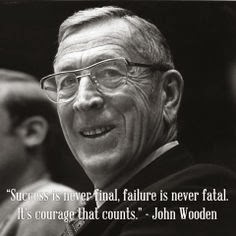Baseball Hall of Famer George Brett turned 60 earlier this year.
That's kind of hard for me to wrap my mind around. I remember watching him play ball when I was a kid.
Well, we're all older now.
But I mention Brett's age because when he was exactly half his current age — 30 years ago today — he was involved in perhaps the most notorious incident of his time.
They called it the "pine tar incident" then, and I presume they still do today.
Brett's original major–league team, the Kansas City Royals, was playing the New York Yankees in Yankee Stadium on that day. Brett started playing in the major leagues in 1973. A decade later, the Royals and Yankees had met in the American League Championship Series four times, and they had kind of developed an animosity toward each other.
Now, I say that knowing that just about every team in baseball loathes the Yankees. They've won more championships than any other team — by far. The Royals were no different than any other team in baseball, but, since they didn't exist until 1969, they were just a little later to the party than the others.
Anyway, as I was saying, the teams were playing each other on this day in 1983. The Royals trailed by a single run with two outs in the top of the ninth, and Brett came to the plate. Hall of Fame reliever Goose Gossage was on the mound. Gossage delivered the pitch, Brett connected and the ball sailed over the fence. Home run. Two runs scored. Royals led, 5–4.
But when Brett crossed the plate with the apparent go–ahead run, Yankee manager Billy Martin left the New York dugout and walked up to the home plate umpire. Martin said he wanted Brett's bat examined. He had observed what he thought was an excessive amount of pine tar on the bat.
Now, at this point, it is probably useful to explain the relevance of pine tar in baseball. Pine tar is a sticky material that has several applications, one of which is to make a baseball bat easier for a player to grip and helps keep a bat from slipping out of a player's hands when he swings.
According to the rules of major league baseball, players may only apply pine tar from the handle of the bat up 18 inches. Martin believed the pine tar on Brett's bat exceeded the 18–inch restriction.
Actually, players are allowed to use any substance or material to improve the grip as long as it does not exceed 18 inches. If it exceeds 18 inches, the rules call for the bat to be removed from play. If a player made a hit with such a bat, it was termed at the time an "illegally hit ball" — resulting in an out.
So, the home plate umpire and the rest of the umpiring crew gathered at home plate to examine Brett's bat — with Brett and the rest of the Royals watching from their dugout. Apparently unable to make an eyeball assessment, the umpires measured the pine tar on the bat against the width of home plate, which is 17 inches, and they determined that Martin was right.
Brett was ruled out, giving the Yankees the victory.

Infuriated by the ruling, Brett ran from the dugout and vigorously objected. He had to be restrained by his manager and teammates, but his protest made no difference. The ruling stood.
(Memorably, a commentator on the scene said that Brett was the first player in history to hit a "game–losing home run.")
The Royals challenged the ruling, and American League President Lee MacPhail overruled it, awarding the victory to the Royals. He explained that the "spirit" of the rule had nothing to do with an unfair advantage for one player or team over another. Rather, it was based on economics. Pine tar that is any higher than 18 inches on a bat runs the risk of smearing the ball and rendering it unfit for use in a game. Home teams are required to provide the balls for games, and that would raise the home team's expenses.
MacPhail believed Brett had not violated the spirit of the rule and that the ball had not come in contact with the pine tar. He decided that the game should be resumed with the Royals leading, 5–4, and Brett was not to play. He was ejected for arguing with the umpire.
So the game was resumed nearly a month later on a scheduled off–day for both squads. Brett, his manager and two of his teammates were ejected per MacPhail's decision. There were additional maneuvers by the Yankees, made necessary by various things that had happened since the July 24 encounter (one of the Yankee players who was in the lineup that day was injured and another had been traded) but, in the end, Kansas City reliever Dan Quisenberry retired the side, and the Royals won the game.
And the pine tar incident took its place in baseball's history.









